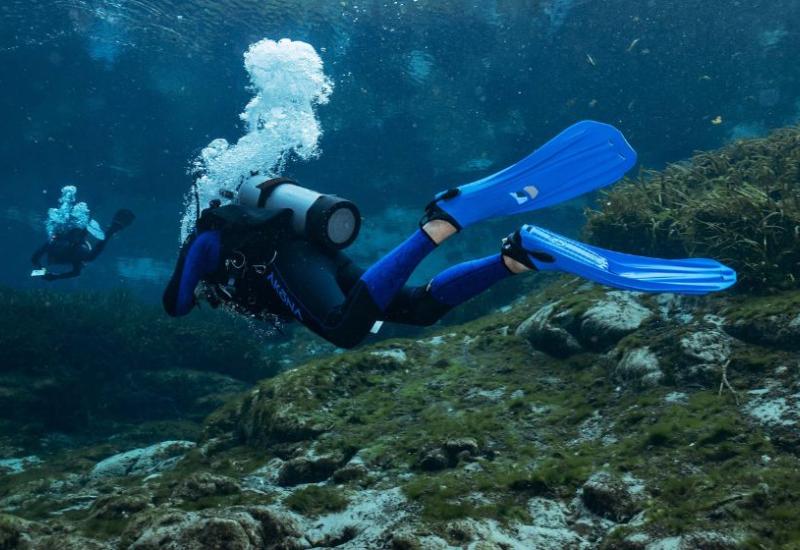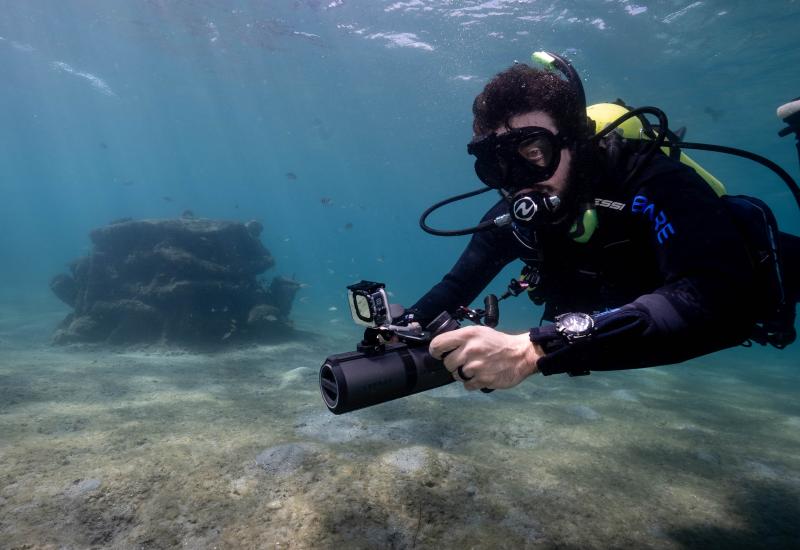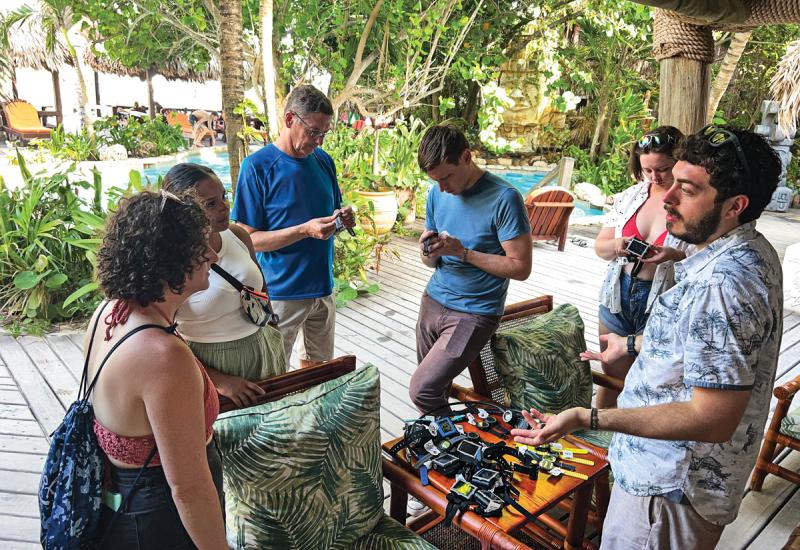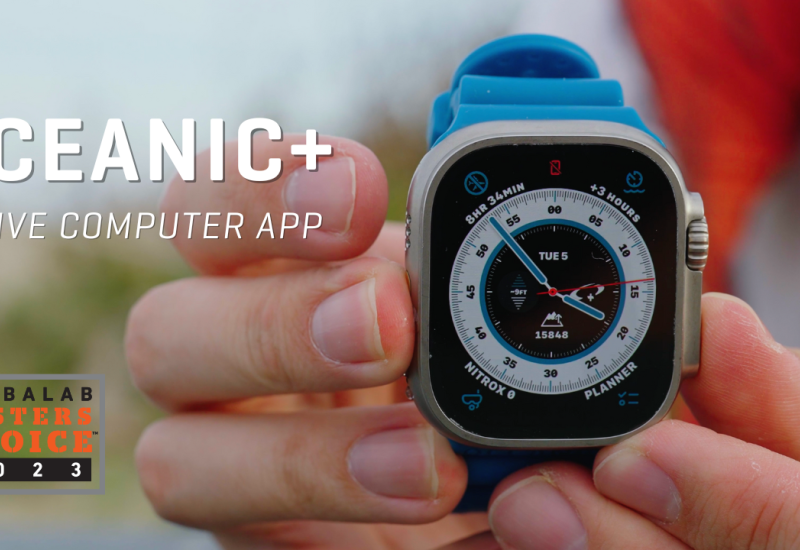The ANSTI Machine: Evaluating A Regulator's Breathing Characteristics

It wasn't all that long ago that the only way you could gauge the breathing characteristics of a regulator was to simply breathe on it, and then try to make subjective judgments on its inhalation effort, exhalation resistance, etc. This was a very frustrating, time-consuming, hit-and-miss process for the lab coat guys when determining what worked and what didn't on a new reg design.
Then about 15 years ago a couple of engineers based in Portsmouth, England, conjured up an extremely accurate test system designed to assist reg engineers in the design, development and testing of their regulators. Dubbed the ANSTI system, this breathing machine has become the gold standard for testing regulators. It stresses regs to extremes under controlled conditions while factoring in diving depth, breathing rate, and mechanical and flow characteristics like valve cracking effort, exhaust resistance and positive pressure.
All this doesn't come cheap. An ANSTI machine's base price hovers in the low six figures and you can easily pay more than a million dollars for a fully loaded test system. Because of this, only a handful of manufacturers actually own an ANSTI system, and in the United States there is only one independent test facility that has one--Dive Lab, based in Panama City Beach, Florida, where Scuba Lab conducts all its regulator testing.
For Scuba Lab tests, following a surface check, each regulator is tested at three different breathing rates, known as RMVs (Respiratory Minute Volumes, basically the amount of gas that can be ventilated through the lungs in one minute), at three depths, for a total of four RMV/Depth combinations. These breathing rates were chosen to enable us to 1) simulate a recreational diver's breathing rate, 2) conform to recognized industry testing parameters for purposes of comparison, and 3) surpass normal breathing rates to determine reserve capacity. Following are the four RMV/depth combinations that Scuba Lab uses to test regulators, what they represent, and how you can apply them to real-world diving situations.
37.5 RMV @ 132 FEET
This test point is the one that most closely represents typical recreational diving. The depth, 132 feet, is the maximum depth recommended for recreational divers, and the 37.5 RMV breathing rater is very close to how a physically fit recreational diver might breathe taking slow deep breaths while swimming a long distance (for comparison, a relaxed diver doing a drift dive or taking photographs will be breathing at about 22 RMV or less). A fit diver could theoretically maintain 37.5 RMV for five minutes or longer without becoming significantly winded. From an engineering standpoint, this rate also gives a good view of the smoothness or lack of smoothness of a regulator's demand valve, and it show a consistency curve when compared to higher RMVs.
75 RMV @ 132 FEET
Only the U.S. Navy and Scuba Lab use this breathing rate to identify equipment potential or limitation. This is considered an extremely heavy work breathing rate. A diver in excellent condition can breathe at 75 RMV for only about a minute. Beyond determining a regulator's reserve capacity in high-stress conditions, this rate also provides a pretty good indication if a regulator is capable of supporting two divers at the maximum recreational depth while buddy breathing (75 RMV divided by two equals 37.5 RMV). While this is not scientific, it offers a reasonable amount of assurance that the regulator can accomplish the goal easily, with difficulty, or not at all.
62.5 RMV @ 165 FEET
This is the standard test depth and "high work rate" used by the European conformance standard EN250 for evaluating regulator performance, which currently is the world's dominant testing authority on regulator performance. Consequently, it is the test point of highest interest among regulator manufacturers. Considered to represent "heavy work," a recreational diver in excellent condition aggressively chasing a huge bat ray through open water would be able to maintain 62.5 RMV for only two or three minutes.
62.5 RMV @ 198 FEET
This is the U.S. Navy's Class A test depth and breathing rate (although the Navy uses a higher supply pressure in their reg testing). This is a test point designed to stress a regulator to find the outer limits of its reserve capacity. Obviously, no diver in his right mind would ever be breathing so aggressively at such an extreme depth with so little gas in his tank. This is for the lab coat crowd only.
Scuba Lab tests are performed at a meager supply pressure of 725-760 psi. This exerts additional stress on the regulators. If a regulator can perform well at this low supply pressure, it will invariably perform even better at a higher supply pressure.
_Note: Our simulator tests are not intended to pass or fail regulators, but rather to scientifically gauge their performance based on controlled conditions. What's more, breathing machine performance does not necessarily reflect in-water performance, simply because there are too many real-world variables that simulators can't measure. A machine might be able to tell you how hard or easy a regulator works to deliver gas at certain depths and breathing rates, but it can't tell you about a regulator that stutters or whistles, or a purge so stiff that clearing is difficult, or whether a regulator will choke you with water when you go heads-down at 50 feet.
So while breathing simulator results are important, they represent only half the story. To capture the complete picture you need to consider both breathing machine performance and ergonomic in-water performance. Scuba Lab, the gear testing arm of Scuba Diving magazine, is the only organization in the entire dive industry that conducts intensive lab testing as well as in-water ergonomic testing of dive gear._
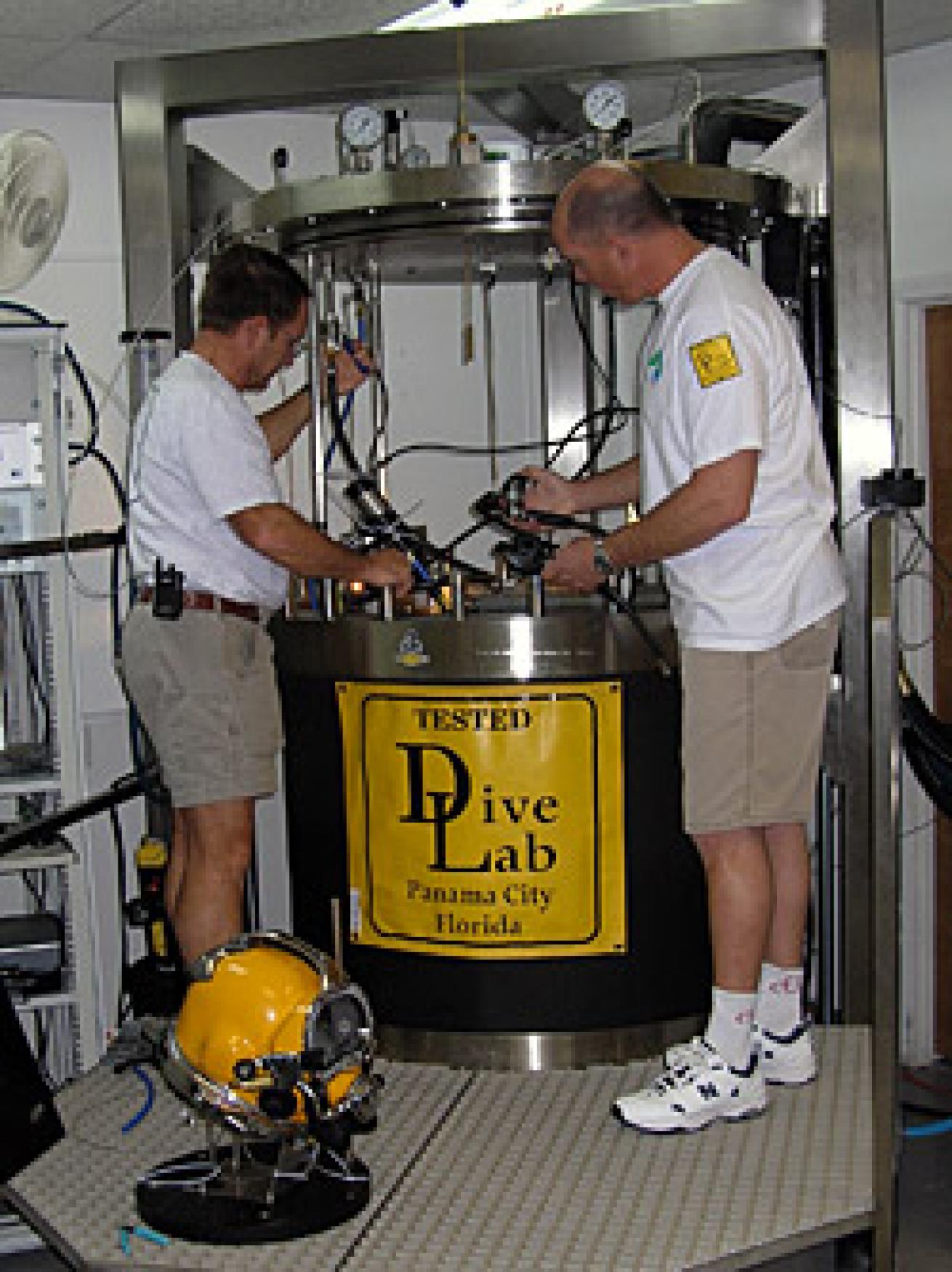
It wasn't all that long ago that the only way you could gauge the breathing characteristics of a regulator was to simply breathe on it, and then try to make subjective judgments on its inhalation effort, exhalation resistance, etc. This was a very frustrating, time-consuming, hit-and-miss process for the lab coat guys when determining what worked and what didn't on a new reg design.
Then about 15 years ago a couple of engineers based in Portsmouth, England, conjured up an extremely accurate test system designed to assist reg engineers in the design, development and testing of their regulators. Dubbed the ANSTI system, this breathing machine has become the gold standard for testing regulators. It stresses regs to extremes under controlled conditions while factoring in diving depth, breathing rate, and mechanical and flow characteristics like valve cracking effort, exhaust resistance and positive pressure.
All this doesn't come cheap. An ANSTI machine's base price hovers in the low six figures and you can easily pay more than a million dollars for a fully loaded test system. Because of this, only a handful of manufacturers actually own an ANSTI system, and in the United States there is only one independent test facility that has one--Dive Lab, based in Panama City Beach, Florida, where Scuba Lab conducts all its regulator testing.
For Scuba Lab tests, following a surface check, each regulator is tested at three different breathing rates, known as RMVs (Respiratory Minute Volumes, basically the amount of gas that can be ventilated through the lungs in one minute), at three depths, for a total of four RMV/Depth combinations. These breathing rates were chosen to enable us to 1) simulate a recreational diver's breathing rate, 2) conform to recognized industry testing parameters for purposes of comparison, and 3) surpass normal breathing rates to determine reserve capacity. Following are the four RMV/depth combinations that Scuba Lab uses to test regulators, what they represent, and how you can apply them to real-world diving situations.
37.5 RMV @ 132 FEET
This test point is the one that most closely represents typical recreational diving. The depth, 132 feet, is the maximum depth recommended for recreational divers, and the 37.5 RMV breathing rater is very close to how a physically fit recreational diver might breathe taking slow deep breaths while swimming a long distance (for comparison, a relaxed diver doing a drift dive or taking photographs will be breathing at about 22 RMV or less). A fit diver could theoretically maintain 37.5 RMV for five minutes or longer without becoming significantly winded. From an engineering standpoint, this rate also gives a good view of the smoothness or lack of smoothness of a regulator's demand valve, and it show a consistency curve when compared to higher RMVs.
75 RMV @ 132 FEET
Only the U.S. Navy and Scuba Lab use this breathing rate to identify equipment potential or limitation. This is considered an extremely heavy work breathing rate. A diver in excellent condition can breathe at 75 RMV for only about a minute. Beyond determining a regulator's reserve capacity in high-stress conditions, this rate also provides a pretty good indication if a regulator is capable of supporting two divers at the maximum recreational depth while buddy breathing (75 RMV divided by two equals 37.5 RMV). While this is not scientific, it offers a reasonable amount of assurance that the regulator can accomplish the goal easily, with difficulty, or not at all.
62.5 RMV @ 165 FEET
This is the standard test depth and "high work rate" used by the European conformance standard EN250 for evaluating regulator performance, which currently is the world's dominant testing authority on regulator performance. Consequently, it is the test point of highest interest among regulator manufacturers. Considered to represent "heavy work," a recreational diver in excellent condition aggressively chasing a huge bat ray through open water would be able to maintain 62.5 RMV for only two or three minutes.
62.5 RMV @ 198 FEET
This is the U.S. Navy's Class A test depth and breathing rate (although the Navy uses a higher supply pressure in their reg testing). This is a test point designed to stress a regulator to find the outer limits of its reserve capacity. Obviously, no diver in his right mind would ever be breathing so aggressively at such an extreme depth with so little gas in his tank. This is for the lab coat crowd only.
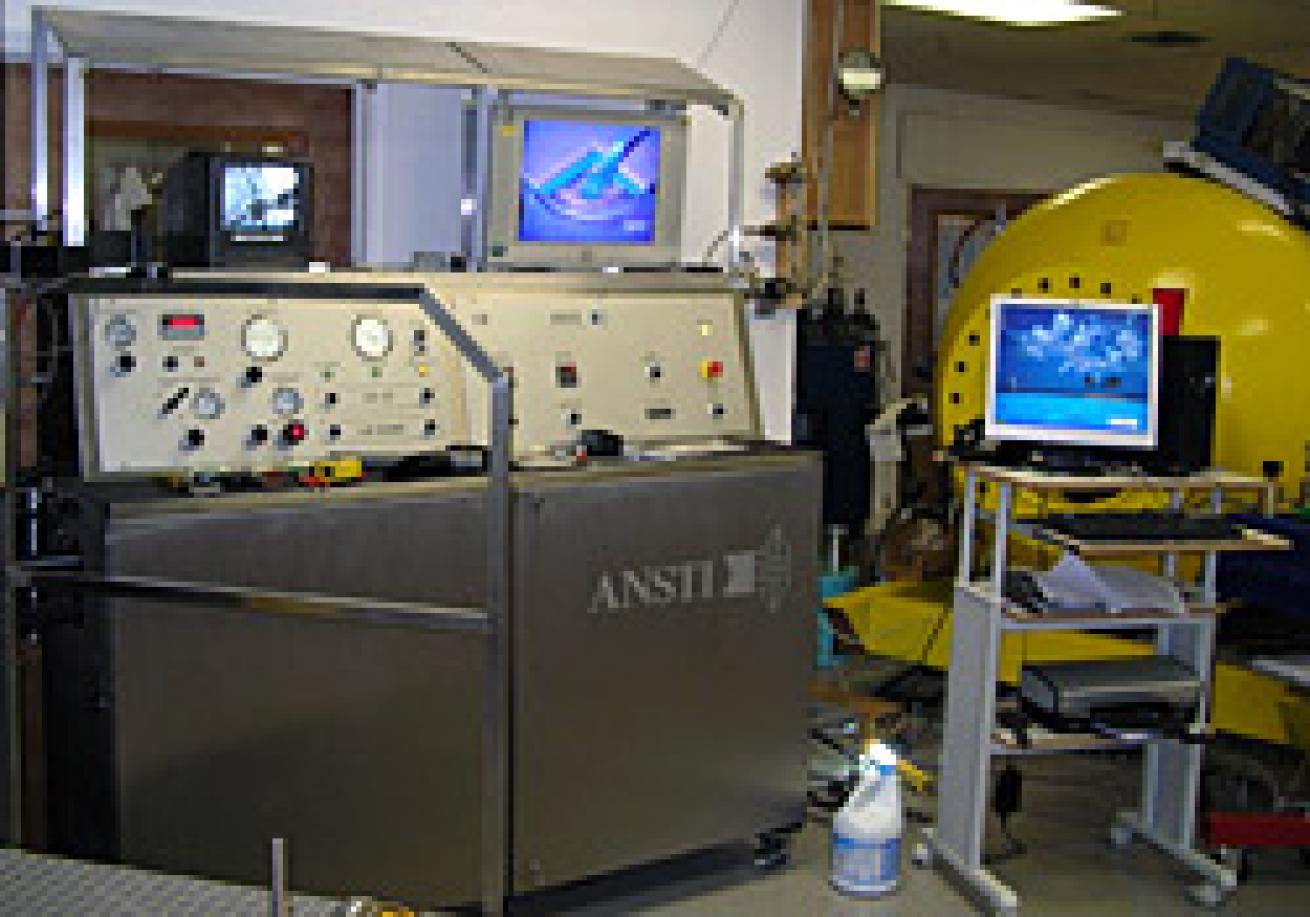
Scuba Lab tests are performed at a meager supply pressure of 725-760 psi. This exerts additional stress on the regulators. If a regulator can perform well at this low supply pressure, it will invariably perform even better at a higher supply pressure.
_Note: Our simulator tests are not intended to pass or fail regulators, but rather to scientifically gauge their performance based on controlled conditions. What's more, breathing machine performance does not necessarily reflect in-water performance, simply because there are too many real-world variables that simulators can't measure. A machine might be able to tell you how hard or easy a regulator works to deliver gas at certain depths and breathing rates, but it can't tell you about a regulator that stutters or whistles, or a purge so stiff that clearing is difficult, or whether a regulator will choke you with water when you go heads-down at 50 feet.
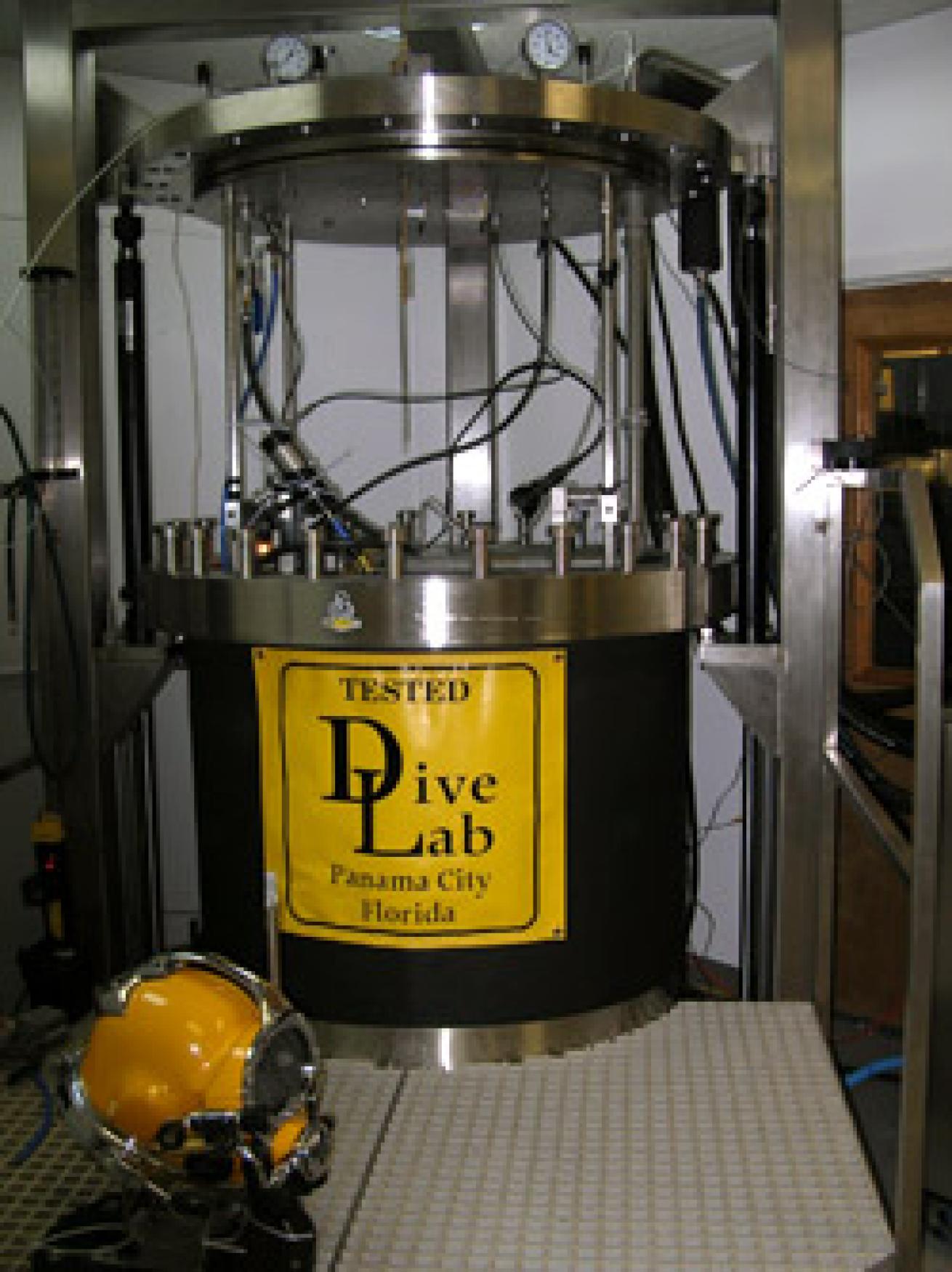
So while breathing simulator results are important, they represent only half the story. To capture the complete picture you need to consider both breathing machine performance and ergonomic in-water performance. Scuba Lab, the gear testing arm of Scuba Diving magazine, is the only organization in the entire dive industry that conducts intensive lab testing as well as in-water ergonomic testing of dive gear._

